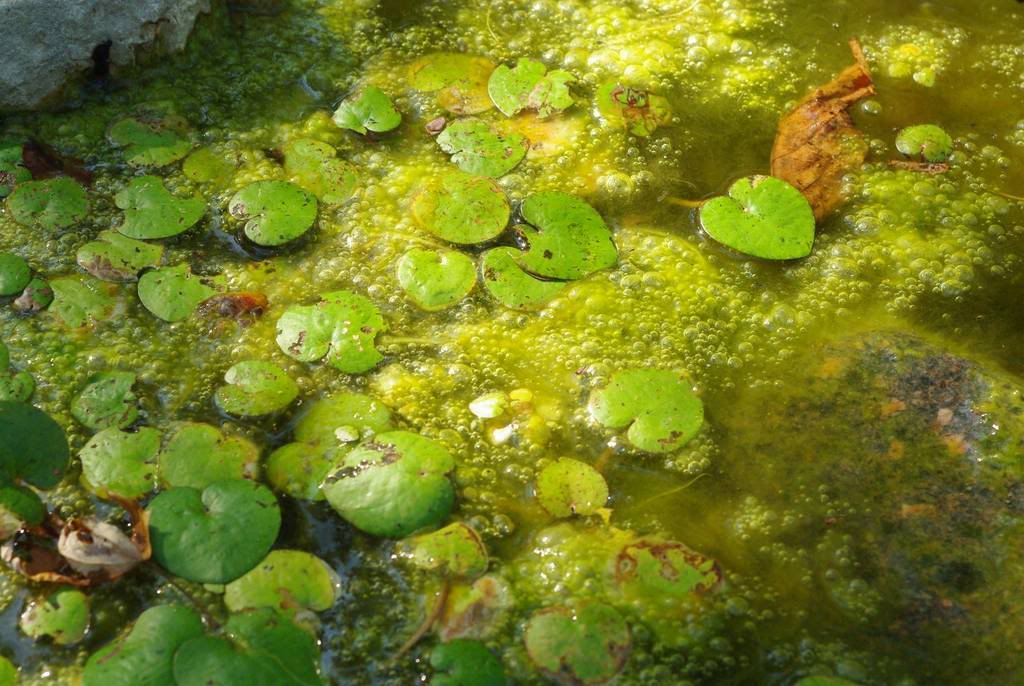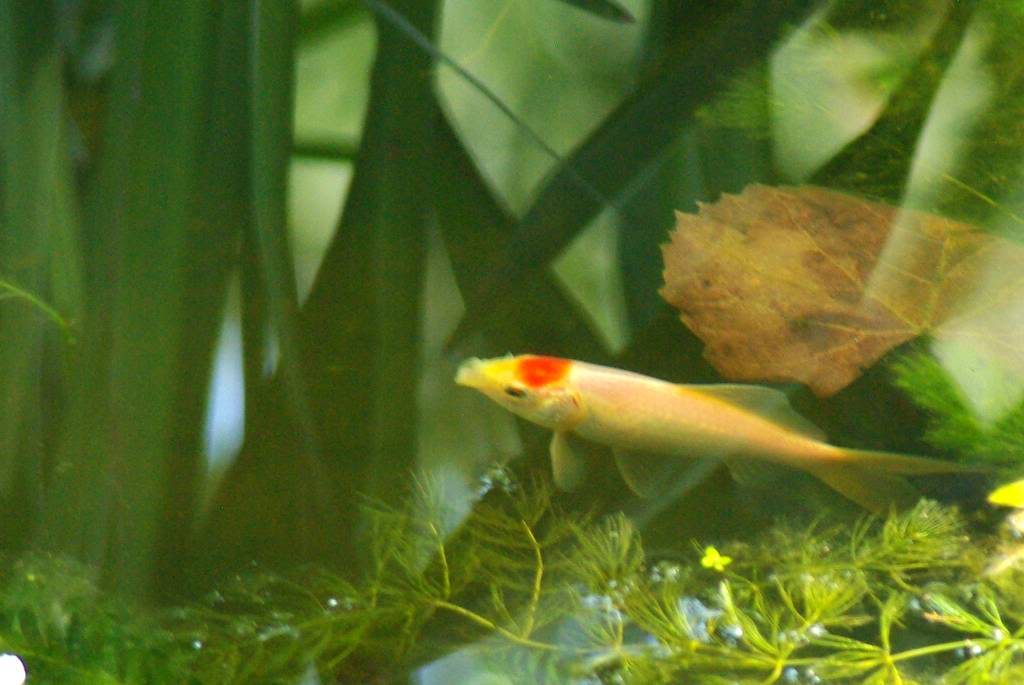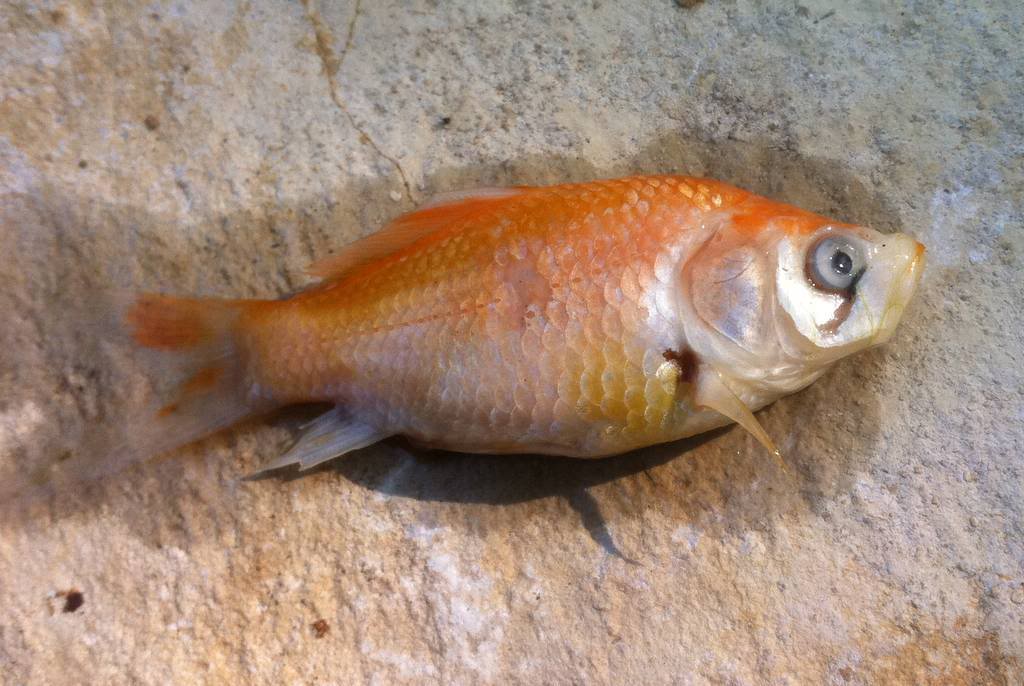Let me show you what I mean.
***
As you can see, some of the string algae has started dying:
There's still plenty of it around, especially near the "beach", but it's definitely going away. The upper parts of this photo would normally be covered with string algae too, but there's none there:
I've been adding beneficial bacteria to the water twice a week for almost two weeks now, and it's been hungrily eating all of the extra organics in the water (from the leaves, maple seeds, and other things that have fallen into the pond that I couldn't remove). This stuff was providing the extra nutrients that the algae was thriving on.
Besides the algae being reduced, I have a feeling that deer have been wading into the pond and reducing my water lily:
Fewer leaves and bare stems usually indicates munching, and I don't envision rabbits or woodchucks taking a swim.
Something I do see taking a swim is....
The goldfish! See those three spots of orange?
This is all of the look I usually get: just a momentary flash of color, a bit of a tail:
These fish are wild and shy, and hide as soon as you walk up to the pond. They've never been fed, so they don't have the "human equals food" conditioning. They only relax and start venturing out of cover after you've been standing still for a little while.
If they've never been fed, what do they eat? I don't know everything that's in their diet, but I know they eat some algae. This one is nibbling it from the rocks:
So are these:
They also eat the duckweed that somehow found its way into the pond. The duckweed is the floating stuff that look a bit like clover:
You can see the last little bit of leaf sticking out of this guy's mouth before it goes down.
I was expecting the duckweed to take over, but there are only small bits of it around. I guess the fish have developed a taste for it and are keeping it in check.
They've at least doubled in size in the five weeks since I released them, so they're finding plenty to eat.
They must be eating mosquito larvae too as I haven't seen any, although there are nooks and crannies in the shallows where those pests could probably develop unharassed by fish. It's been so dry here in St. Louis that mosquito populations are down anyway, but I like to think these fish are helping.
Incidentally, I don't know exactly how many fish I've got. I've seen eight at one time recently, but that's the most I can confirm. I originally added 15, but a few of them died in the first week or so:
I think I've found four dead ones, which should leave 11.
The orange and white fish I can see quite easily. I've suspected that at least one of the less-colorful ones survived, but until today I never knew for certain:
It's my own bigfoot sighting photo: blurry and poor quality but so exciting to those who are into it!
So that makes nine fish that I know about... assuming that none have died since I saw those eight at once.
There are so many places to hide, it doesn't surprise me that I can't get an accurate count. The hornwort has grown so crazily, I wonder if any of it that I sank is still growing underwater or if it has all floated back to the surface?
Even though I don't get to see them very clearly, having these fish in the pond just makes the whole thing so much more enjoyable and worthwhile.
Gotta love a pond that's alive!
.

















Looks like you're starting to get the balance already in your new pond. Shame a few fish died but it's not that unusual to have a few casualties when you introduce new fish on a wildlife pond.
ReplyDeleteAlan, You would love purple pickerel weed. Give it a shot if you see it at a garden center! Happy "ponding!"
ReplyDelete-jeremy
The flashes of color in your pond make it seem more alive and interesting! Hooray for goldfish!
ReplyDeleteThat's so cool! are you planning to "condition" your fish in the future, so you can take pictures of them, or just keep them "wild"?
ReplyDeleteMy fishies eat the algae too! Aren't they lovely to watch? I find them very restful ...
ReplyDelete